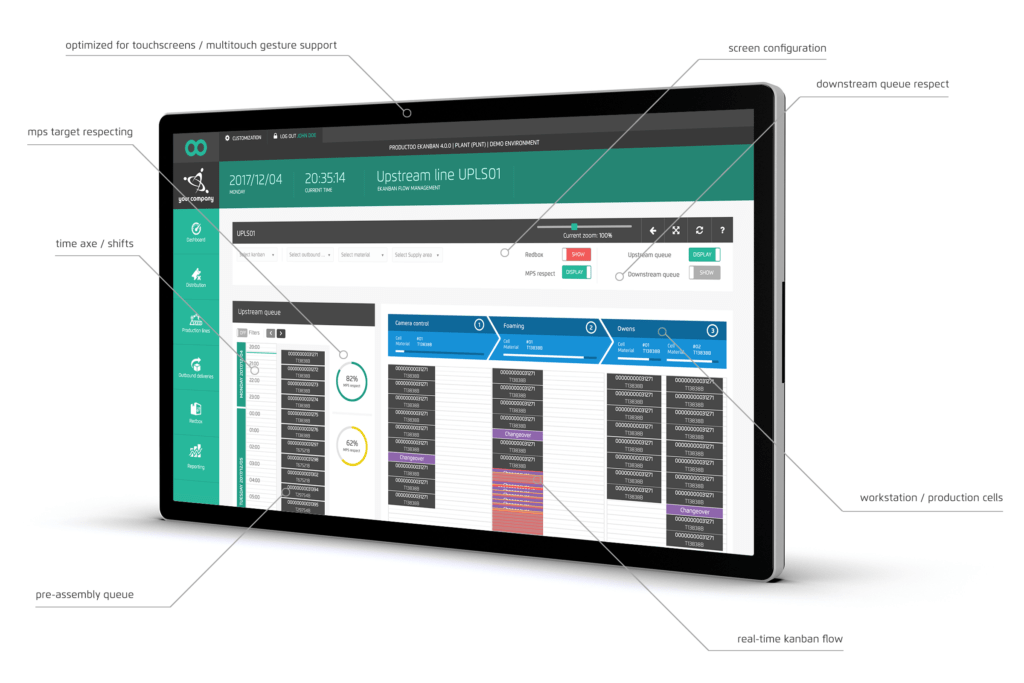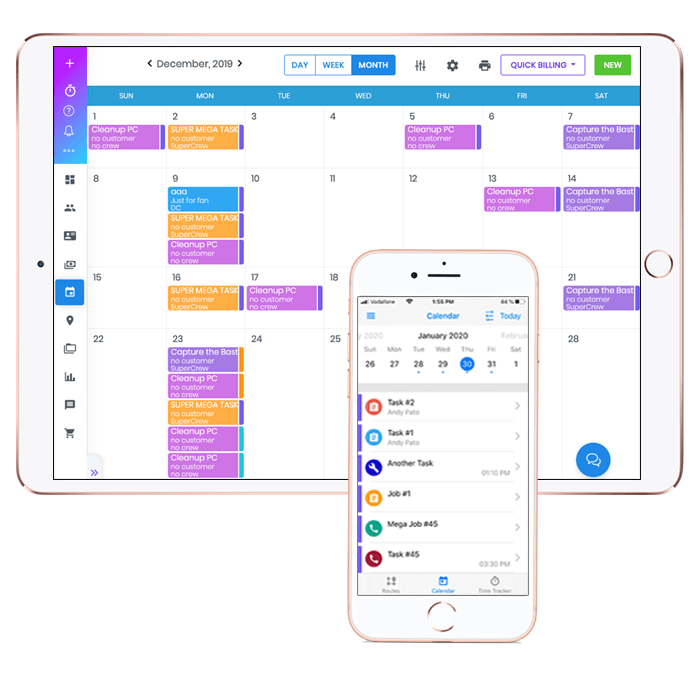Top Scheduling Software Solutions to Boost Business Efficiency
Top Scheduling Software Solutions to Boost Business Efficiency. Discover the top scheduling software solutions designed to boost business efficiency. Simplify your workflow & stay organized effortlessly!

Understanding Business Needs with Scheduling Software
- Integration capabilities
- Automated notifications
- User-friendly interface
Key Features of Top Scheduling Software
| Feature | Benefit |
|---|---|
| Calendar Sync | Real-time Updates |
| Automated Alerts | Reduce Overbooking |
| Team Collaboration | Enhanced Communication |
Comparing Popular Scheduling Software Options
| Software | Main Feature |
|---|---|
| ABC Scheduler | Seamless Team Collaboration |
| XYZ Planner | Automated Alerts |
How Scheduling Software Enhances Employee Productivity
- Reduces human error
- Improves time management
- Ensures clarity among employees
User Experiences with Scheduling Software
Tips for Selecting the Best Scheduling Software
- Identify core functionalities
- Consider ease of use
- Review compatibility

Feature of TidyCal
TidyCal offers a seamless scheduling solution to boost efficiency. It provides Lifetime access with continuous updates to its plans. As an AppSumo Original, TidyCal promises simplicity & affordability. No codes to remember or stack just select the preferred plan. Users have 60 days to activate their licenses, with flexibility to upgrade or downgrade plans within this period. This is ideal for new users who don't have a paid account.
This software facilitates customization of primary calendars per Booking Type for diverse events. It integrates features like stats & analytics for tracking views, conversion rates, & income. Users can manually handle booking requests & collect cancellation reasons. TidyCal supports multiple meeting locations, enhancing convenience for attendees.
Email reminders are fully customizable, along with group & package bookings aligning with user needs. It supports booking limits for daily, weekly, or monthly settings per Booking Type. With automatic creation of meeting URLs using Zoom, Google Meet, or Microsoft Teams, event setup is simplified. Users can export attendee data & booking details, & redirect confirmations to specific URLs. Offerings like Paid Bookings help monetize scheduling capabilities.
Challenges of TidyCal
Users have reported some challenges with TidyCal. Compatibility with certain calendar applications may present issues. The interface has a learning curve for some. Adjustments in user experience could enhance usability. Manual booking approval, while beneficial, can add to user workload, particularly with high booking volumes.
User feedback points to missing advanced features relative to competitors. Some users mentioned limited customization options in template designs. Solutions might include adding more customizable templates or expanding integration capabilities with third-party software. Ensuring thorough tutorial resources can help new users minimize adaptation challenges.
Availability of a customer support feature could make a significant difference. A comprehensive FAQ section may minimize initial user frustrations. Overall, balancing easy use with robust features is key for enhancing satisfaction & functionality.
Price of TidyCal
TidyCal offers competitive pricing structures suited for individuals & agencies. Below is a comparison:
| Plan | Price | Features |
|---|---|---|
| Individual Plan | $39 | Basic features for single users |
| Agency Plan | $79 | Extended features for multiple users |
The Individual Plan is priced at $39 & covers essential features for personal use. The Agency Plan, at $79, caters to multiple users requiring advanced functionalities. Investment in the right plan can significantly enhance scheduling efficiency.
Clear understanding of the pricing structure can aid prospective users in making informed decisions. It's essential to choose a plan that aligns with specific needs & business goals.
Limitations of TidyCal
While TidyCal is feature-rich, it has limitations. It lacks some advanced features present in competitors. Customization of appointment templates is limited. The software offers fewer integrations compared to alternatives. Users might find the interface less intuitive, leading to a steeper learning curve.
The analytics feature, while useful, might not provide as in-depth insights as desired. Users looking for advanced data analysis might find TidyCal lacking. Also, real-time syncing with certain external calendars has posed challenges for a select group of users. Regular updates could address these issues.
Despite these limitations, the software remains a reliable option for basic scheduling needs. Available features suffice for smaller businesses, although expanding the feature set could broaden its appeal.
Case Studies
Real-life applications of TidyCal showcase its potential. In one case study, a yoga instructor effectively streamlined her class bookings. Previously, she manually managed attendance via emails & phone calls. With TidyCal, she introduced group booking functionalities that automated scheduling.
This switch saved hours weekly & improved client satisfaction. Another example is a consultancy firm that struggled with overlapping meetings. By implementing TidyCal, the firm coordinated team schedules effortlessly. Auto-generated meeting links advanced communication & prevented double bookings.
These success stories highlight how TidyCal enhances business operations. Leveraging group & package bookings has enabled businesses to optimize time & improve client service quality.
Recommendations for TidyCal
To maximize benefits from TidyCal, users should optimize scheduling approaches. Initially, complete setup of the primary calendars per Booking Type ensures organized event management. Utilizing analytic features provides insights into scheduling efficiency & aids in future improvements.
Users should leverage customizable email templates for enhanced attendee communication. Setting booking limits ensures time is managed effectively. For businesses, integrating TidyCal with cloud-based tools like Google Calendar can streamline schedule updates across platforms.
Regular reviewing of booking stat reports uncovers patterns, helping to adapt schedules. Users are encouraged to explore available tutorials for a deeper understanding of advanced features. Such proactive strategies ensure comprehensive utility of TidyCal's functionalities.
Additional Tools for Maximizing Efficiency
- Google Calendar
- Microsoft Outlook
- Zoom
- Google Meet
- Microsoft Teams
Top Functions to Utilize
- Email Reminders
- Group Bookings
- Package Bookings
- Analytics Reports
- Meeting URLs
Common TidyCal User Practices
- Multi-location Scheduling
- Paid Bookings Setup
- Schedule Limits Configuration
- Exporting Attendee Data
- Customizing Email Alerts
Tables for Comparisons
| Feature | Rating | Comments |
|---|---|---|
| Usability | 8/10 | Some learning curve |
| Integration | 7/10 | Limited options |
| Features | 9/10 | Expansive offerings |
| Challenge | Impact | Solution |
|---|---|---|
| Customization | Moderate | Expand templates |
| Integration | High | Increase connections |
| Learning Curve | Low | Provide tutorials |
5 Appointment Scheduling Software for Small Business!
What are the key benefits of using scheduling software solutions for businesses?
Scheduling software solutions can greatly improve business efficiency by automating appointment bookings, optimizing resource allocation, reducing administrative burdens, & enhancing team collaboration. They also help in minimizing scheduling conflicts & improving customer satisfaction.
How does cloud-based scheduling software contribute to business flexibility?
Cloud-based scheduling software allows users to access their schedules from any location at any time, supporting remote work & offering flexibility in managing appointments. It also facilitates real-time updates & changes, ensuring all stakeholders are informed promptly.
Can scheduling tools integrate with other business software?
Yes, most modern scheduling tools offer integration capabilities with other business software like CRMs, email systems, & project management tools, enabling seamless workflow automation & data synchronization.
What factors should be considered when choosing the right scheduling software for a business?
When selecting scheduling software, businesses should consider factors such as ease of use, integration capabilities, scalability, customer support, cost, & specific features tailored to the business's operational needs.
How can scheduling solutions improve customer experience?
Scheduling solutions enhance customer experience by providing easy online booking options, sending automated reminders, & offering self-service rescheduling capabilities, which increase convenience & reduce no-show rates.
What role do analytics play in scheduling systems?
Analytics in scheduling systems provide insights into appointment trends, resource utilization, & employee productivity. This data helps in making informed decisions to optimize processes & improve overall efficiency.
Are there any industry-specific scheduling software available?
Yes, there are scheduling software solutions designed for specific industries such as healthcare, retail, hospitality, & professional services. These solutions often include specialized features catering to the unique needs of each industry.
What security features should be present in a reliable scheduling tool?
A reliable scheduling tool should include security features such as data encryption, secure user authentication, compliance with industry standards, & regular security updates to protect sensitive business & customer information.
How do mobile-friendly scheduling applications benefit businesses?
Mobile-friendly scheduling applications allow team members & customers to manage & access schedules on the go, improving responsiveness & ensuring timely updates, which is crucial for maintaining efficiency in a mobile-driven world.
Can AI-powered scheduling solutions make a difference in business operations?
AI-powered scheduling solutions can significantly enhance business operations by predicting optimal scheduling times, automating repetitive tasks, analyzing patterns to improve decision-making, & personalizing user experiences.





